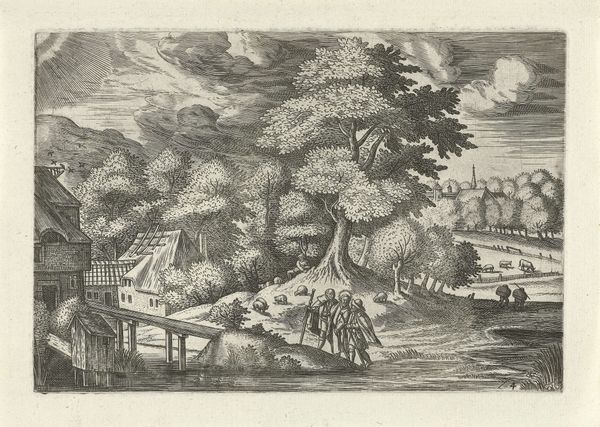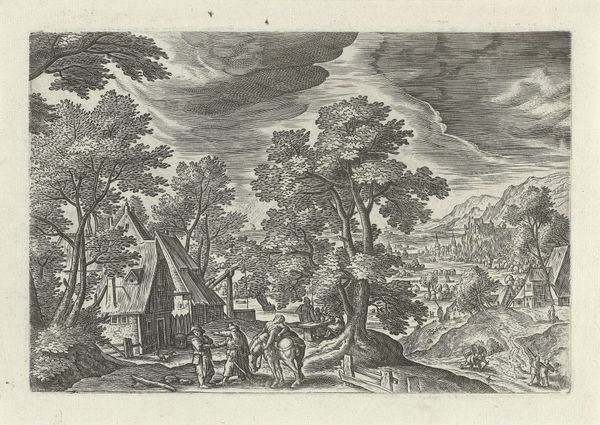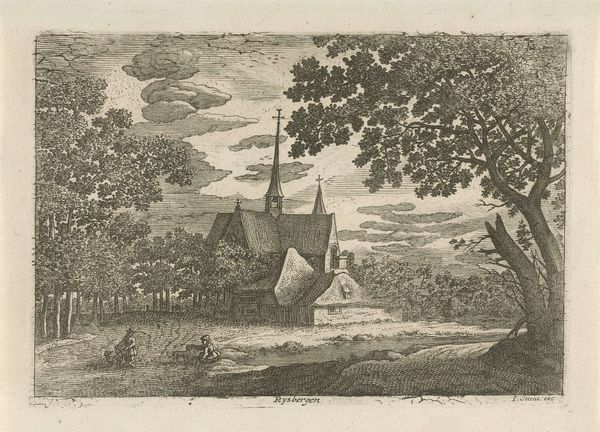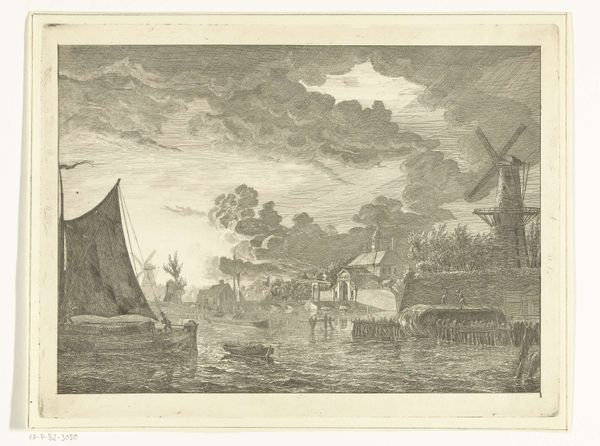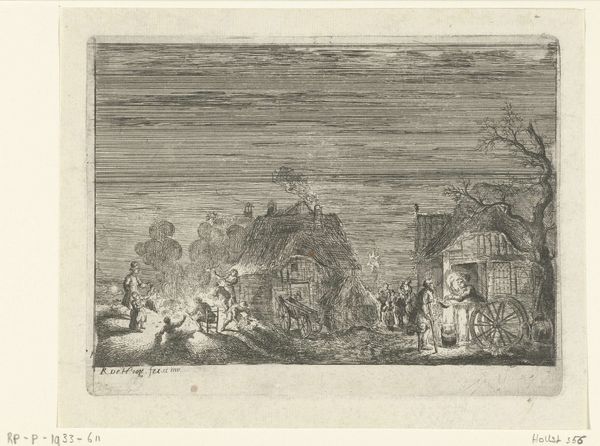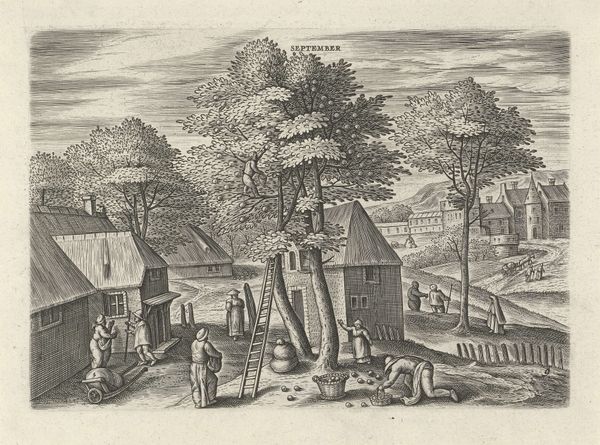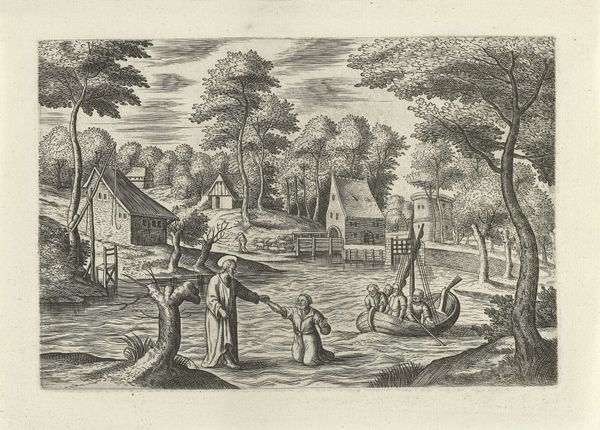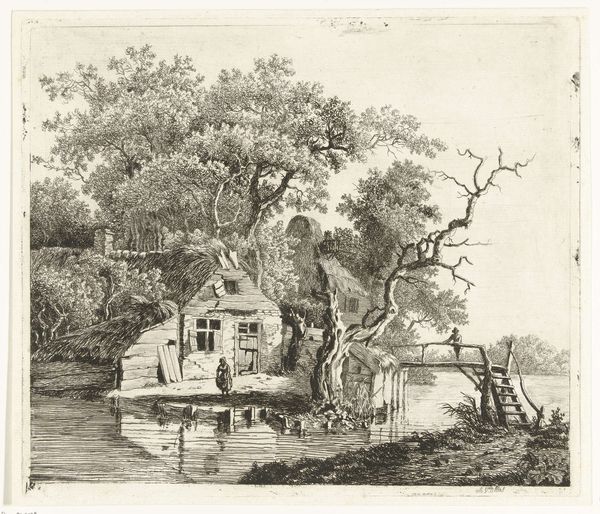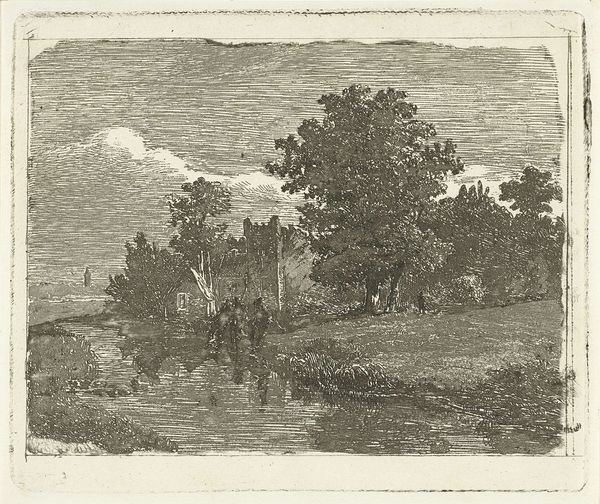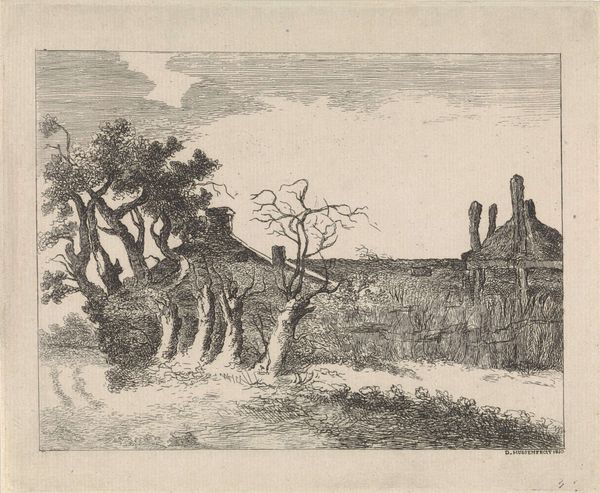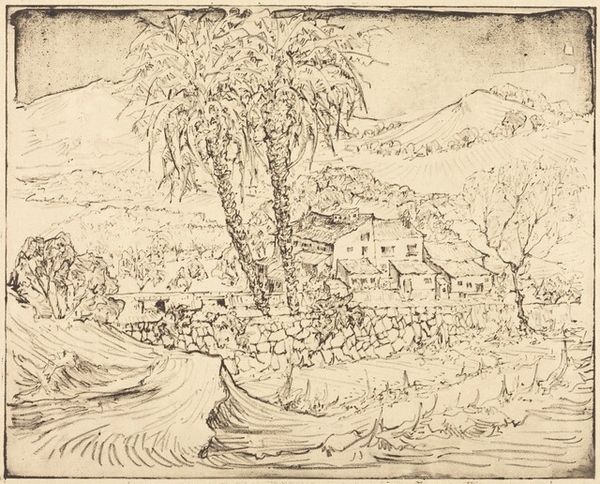
print, woodcut
# print
#
landscape
#
woodcut
#
cityscape
#
realism
Dimensions: image: 152 x 185 mm sheet: 222 x 290 mm
Copyright: National Gallery of Art: CC0 1.0
Curator: Look at this evocative cityscape, a woodcut print called "Near Coney Island," crafted by Isami Doi in 1936. It's got such a wonderfully textured surface. Editor: My first thought? Brooding. A lot of grays and blacks. It’s like a hazy, almost ghostly recollection of a place. The stillness of the boats gives the impression that everyone has retreated, as if sheltering from some gathering, or an earlier, storm. Curator: Doi certainly captures a stillness, a mood. Remember that the 1930s was smack-dab in the middle of the Depression, and there was, without any shade of a doubt, economic uncertainty for many working-class Americans. The way the boats are beached feels heavy, full of implications. Editor: The boarded-up cottage behind the boats on the banks reminds me of rural depopulation as a direct result of both the agricultural crises and lack of opportunities within urban centers. Note also the child standing with arms at their side: this hints at the economic stagnation which led to uncertainty for many living through this period. How they must’ve been hoping things might shift. Curator: What fascinates me is the contrast of Doi's realism with what I'd say is something else: it has a stylized element to it. The rendering of the clouds and trees feels expressionistic. Even the water, almost metallic. What do you suppose motivated this flattening of the perspective? Editor: I'd argue that it could underscore Doi's personal viewpoint on the anxieties faced by working-class citizens, amplifying that emotional resonance through the woodcut’s bold linearity. It’s the feeling of displacement translated into visual form. Curator: I never thought about it this way, but you are probably right. Editor: It is just an assumption on my behalf of course. Regardless, the texture gives it that wonderful graphic feel. Looking back, one could say Doi was a gifted printmaker. Curator: Absolutely. What a unique and powerful piece reflecting an era through its landscape and the latent stories it contains.
Comments
No comments
Be the first to comment and join the conversation on the ultimate creative platform.
